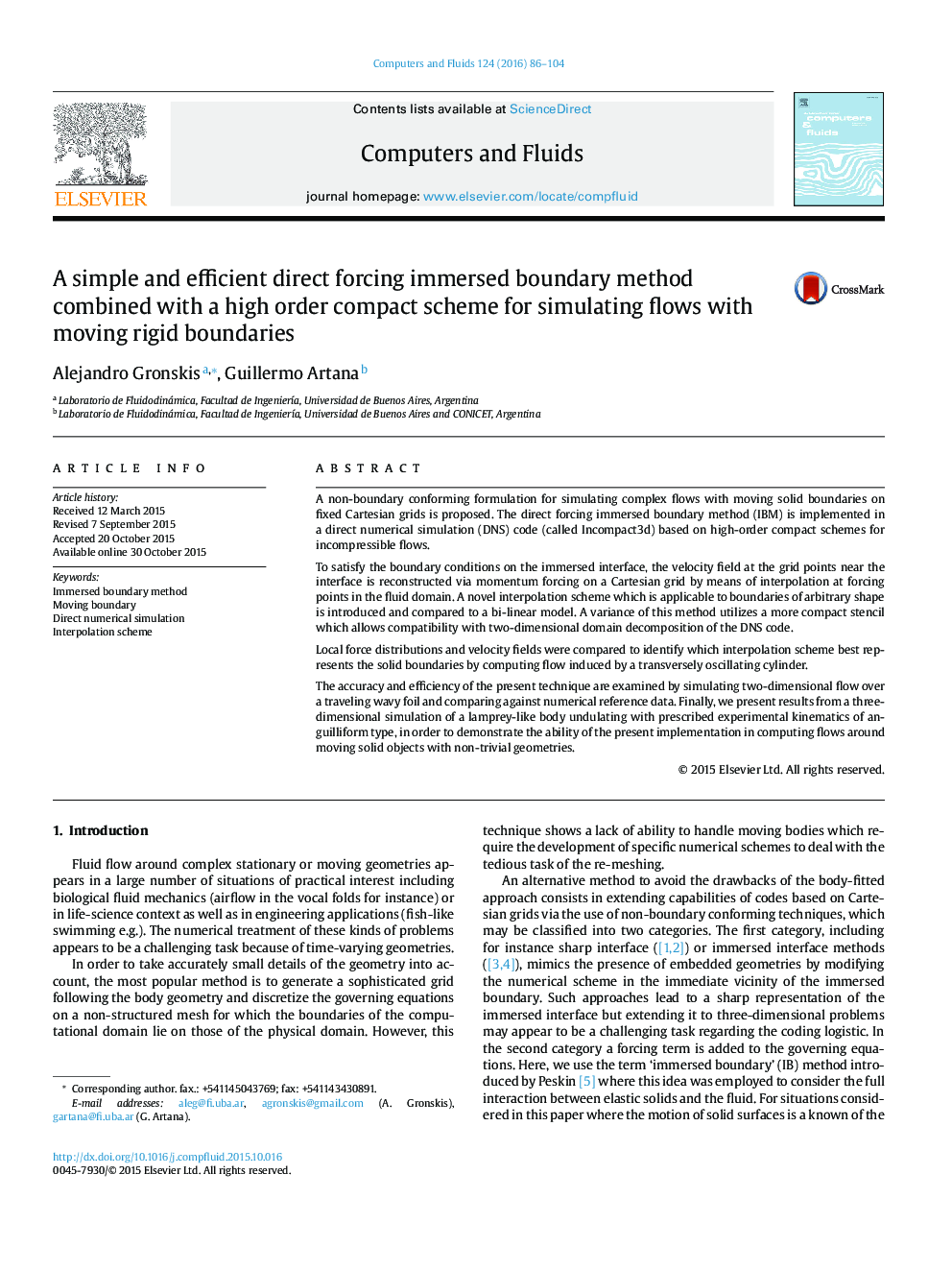| Article ID | Journal | Published Year | Pages | File Type |
|---|---|---|---|---|
| 768089 | Computers & Fluids | 2016 | 19 Pages |
•A method to perform DNS around complex moving boundaries on fixed grids is proposed.•The strategy relies on high order compact schemes and direct forcing-node approach.•High order interpolation at fluid-solid interface allows a very coarse grid.•Aerodynamic force evaluation is consistent with the boundary reconstruction.•Efficiency is tested through validation of the flow over a traveling wavy foil.
A non-boundary conforming formulation for simulating complex flows with moving solid boundaries on fixed Cartesian grids is proposed. The direct forcing immersed boundary method (IBM) is implemented in a direct numerical simulation (DNS) code (called Incompact3d) based on high-order compact schemes for incompressible flows.To satisfy the boundary conditions on the immersed interface, the velocity field at the grid points near the interface is reconstructed via momentum forcing on a Cartesian grid by means of interpolation at forcing points in the fluid domain. A novel interpolation scheme which is applicable to boundaries of arbitrary shape is introduced and compared to a bi-linear model. A variance of this method utilizes a more compact stencil which allows compatibility with two-dimensional domain decomposition of the DNS code.Local force distributions and velocity fields were compared to identify which interpolation scheme best represents the solid boundaries by computing flow induced by a transversely oscillating cylinder.The accuracy and efficiency of the present technique are examined by simulating two-dimensional flow over a traveling wavy foil and comparing against numerical reference data. Finally, we present results from a three-dimensional simulation of a lamprey-like body undulating with prescribed experimental kinematics of anguilliform type, in order to demonstrate the ability of the present implementation in computing flows around moving solid objects with non-trivial geometries.
